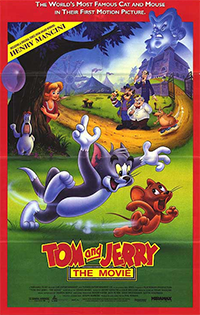 French director Luc Besson’s new film, “Lucy” found its way
into theaters last week. Produced by Besson and Europacorp, it stars Scarlett
Johansson, Morgan Freeman, Amr Waked and Choi Min-sik and was shot on location
in Taipei, Paris and New York City.
French director Luc Besson’s new film, “Lucy” found its way
into theaters last week. Produced by Besson and Europacorp, it stars Scarlett
Johansson, Morgan Freeman, Amr Waked and Choi Min-sik and was shot on location
in Taipei, Paris and New York City.
Lucy (Johansson) is a woman living in Taipei who unwittingly
delivers a packet of new synthetic drugs for the Taiwanese Mafia and soon finds
herself as one of their drug mules. However, the drug finds its way into her
system and allows her to tap into more than 10 percent of her brain. She can
absorb knowledge instantly, move objects with her mind and change her physical
features on whim. But time is running out for her and she must reach Professor
Samuel Norman (Freeman), a noted neuroscientist, to pass on her knowledge.
Based off the faulty notion that humans only use 10 percent
of their brain (we use 10 percent similar to the way we only use 33 percent of
a stoplight), “Lucy” can best be described as “Transcendence” meets “The
Matrix” meets “2001: A Space Odyssey.” While the film has great acting and
visuals, the story itself leaves a lot to be desired, especially in the final
third.
Normally, actors are praised for being able to give life to
their roles and giving their characters a wide range of expressive emotion. And
Johansson does so very well in the early parts of the film, becoming a
blubbering mess when she’s ordered by the mafia to open a package with unknown
contents. However, after the drugs have entered her system, she becomes an
unemotional stilted block of wood. And that’s actually a good thing. It’s
established that by unlocking the extra brainpower, Lucy cannot feel pain,
discomfort or fear. Johansson is able to pull off a bland, robot-like persona
without emotion very well. But she can also slip back into emotive with ease.
There’s a point where the drug starts to wear off and she’s literally falling
apart and evaporating. Her ensuing freak out is acted greatly. And of course,
there’s Freeman and his voice. The man could read the White Pages and there
wouldn’t be any complaints.
The film has impressive visuals as well. After Lucy has
ingested the drugs and garnered the ability to unlock the untapped portions,
she is able to look into her roommate’s innards and see everything going on
with her body. The visuals make it into a very fluid X-ray and don’t obviously
telegraph what Lucy finds wrong with the other person until she mentions it.
There’s also a point where she can see the satellite threads of every mobile
phone call going on in the area and pick one out of all of them. On the other
hand, the cutaways can get a little distracting. Early on in the film, Norman
is giving a lecture, which is interspersed between what Lucy’s going through,
and some of his points cut away to scenes of nature that describe what he’s
saying. One of them is humorous, but they really feel out of place.
However, while the visuals and acting are great, the story
is lacking and it really unravels near the end. The trailers marketed the film
as a sci-fi action thriller where Lucy is able to use more than 10 percent of
her brain and do a whole bunch of crazy things while being chased by the
Taiwanese mafia. However, almost all the action scenes were shown in the
trailer and while it certainly is that type of film, the action just feels like
it lacks a sense of urgency since Lucy can do anything with her mind. Also, the
whole action thriller plot unravels during the last third when Lucy meets
Norman and his peers. While the mafia is still trying to get to her, the film
shifts and centers on the meaning of life and the universe.
“Lucy” feels like Besson wanted to recreate the meaning behind
“2001: A Space Odyssey” while being able to attract as many people as possible.
The only problem with this is Stanley Kubrick made nothing uncertain that his
film was a dramatic journey of discovery through time and space. Besson
attempted a sort of bait and switch, promising an action thriller about a woman
who can use her mind more than possible, but delivering a lesson on the
necessity of sharing knowledge and learning more about the universe. It’s an
anvil that needs to be dropped, but not like this.
I put Lucy at #6 for 2014 New Releases, just under the Edge of Dissatisfaction. It's at least better than Tammy.





